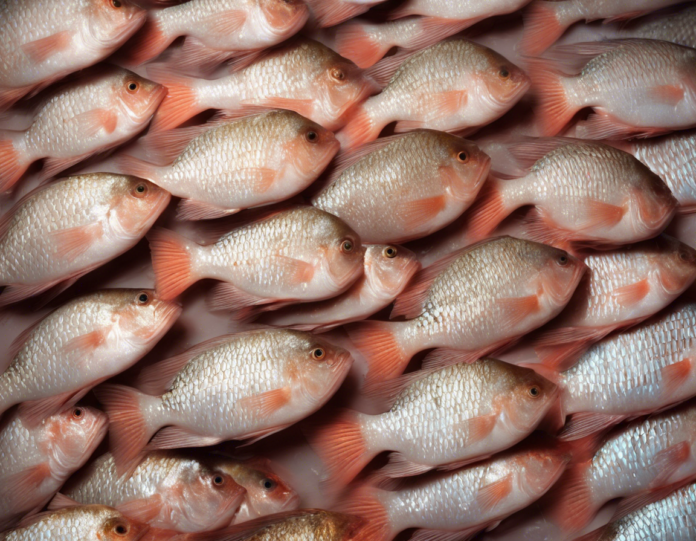As the demand for seafood continues to rise globally, the aquaculture industry plays a crucial role in meeting this need. Tilapia fish, in particular, has become a popular choice among consumers due to its mild flavor, affordability, and perceived health benefits. However, like all food products, tilapia can be susceptible to bacterial contamination, posing risks to human health if not handled and prepared correctly.
In this comprehensive guide, we will delve into the risks associated with bacteria in tilapia fish, explore common types of bacteria found in tilapia, discuss the sources of contamination, and provide best practices for reducing bacterial risks in tilapia consumption.
Types of Bacteria Found in Tilapia Fish
Tilapia fish can harbor various types of bacteria, including but not limited to:
1. Salmonella:
- Description: Salmonella is a common foodborne pathogen that can cause gastrointestinal illness in humans.
- Source: Contamination can occur during processing, handling, or exposure to contaminated water sources.
- Symptoms: Symptoms of salmonella infection may include diarrhea, abdominal cramps, and fever.
2. Escherichia coli (E. coli):
- Description: While some strains of E. coli are harmless, others can cause severe food poisoning.
- Source: Contamination can occur through fecal matter exposure or unsanitary processing environments.
- Symptoms: Symptoms of E. coli infection may include diarrhea, nausea, and vomiting.
3. Listeria:
- Description: Listeria monocytogenes is a dangerous bacterium that can thrive in cold temperatures.
- Source: Contamination can occur through cross-contamination or exposure to contaminated equipment.
- Symptoms: Listeria infection can lead to fever, muscle aches, and in severe cases, meningitis.
Sources of Bacterial Contamination in Tilapia Fish
1. Water Quality:
- Tilapia fish raised in contaminated water sources can absorb bacteria, leading to potential health risks for consumers.
- Poor water quality management in aquaculture facilities can contribute to bacterial contamination.
2. Processing and Handling:
- Improper processing and handling of tilapia fish post-harvest can introduce bacteria to the fish.
- Cross-contamination during processing can also lead to bacterial growth on the fish.
3. Storage and Transportation:
- Inadequate storage conditions, such as improper refrigeration temperatures, can promote bacterial growth on tilapia fish.
- Contaminated transportation vehicles or storage facilities can further increase the risk of bacterial contamination.
Best Practices for Reducing Bacterial Risks in Tilapia Fish
1. Source Responsibly:
- Choose tilapia fish from reputable suppliers who adhere to strict quality and safety standards.
- Ensure that the fish is raised in clean water environments with proper monitoring and management practices.
2. Proper Handling:
- Practice good hygiene when handling tilapia fish, including washing hands thoroughly before and after handling.
- Use separate cutting boards and utensils for raw and cooked fish to prevent cross-contamination.
3. Cook Thoroughly:
- Cook tilapia fish to the recommended internal temperature of 145°F (63°C) to kill any bacteria present.
- Avoid consuming raw or undercooked tilapia fish, especially if you are in a high-risk group for foodborne illnesses.
4. Storage Guidelines:
- Refrigerate tilapia fish promptly after purchase and consume it within a few days to minimize bacterial growth.
- Keep raw tilapia separate from ready-to-eat foods in the refrigerator to prevent cross-contamination.
5. Regular Inspections:
- Conduct regular inspections of aquaculture facilities, processing plants, and retail outlets to ensure compliance with safety standards.
- Report any concerns regarding the quality or safety of tilapia fish to the relevant authorities.
By following these best practices, consumers can reduce the risks associated with bacterial contamination in tilapia fish and enjoy this nutritious seafood option safely.
Frequently Asked Questions (FAQs)
1. Can washing tilapia fish before cooking remove bacteria?
- While washing fish can help remove some surface bacteria, thorough cooking is the most effective way to kill harmful bacteria present.
2. Is it safe to eat raw tilapia in sushi or sashimi?
- Consuming raw tilapia poses risks of bacterial infection, and it is recommended to cook tilapia fish thoroughly to ensure food safety.
3. How can I tell if tilapia fish has gone bad?
- Signs of spoiled tilapia fish include a strong fishy odor, slimy texture, or discoloration. It is best to discard fish that appears spoiled.
4. Are there specific populations more at risk of bacterial infections from tilapia fish?
- Individuals with weakened immune systems, pregnant women, young children, and the elderly are more vulnerable to foodborne illnesses and should exercise caution when consuming seafood.
5. Can freezing tilapia fish kill bacteria?
- Freezing can slow down the growth of bacteria but may not necessarily kill all bacteria present. It is still essential to cook thawed tilapia thoroughly before consumption.
In conclusion, being aware of the risks associated with bacteria in tilapia fish, understanding common sources of contamination, and following best practices for safe handling and consumption can help mitigate these risks and ensure a pleasurable dining experience for seafood enthusiasts. By making informed choices and adopting proper food safety measures, consumers can enjoy the many benefits that tilapia fish has to offer without compromising their health and well-being.













